Home / Compare Electricity & Ga… / Guide to renewable energ…




Key takeaways
- By increasing the use of renewable energy over fossil fuels, we can have a more sustainable and environmentally friendly energy supply.
- By installing solar panels, and ideally a solar battery, on your roof, you can take advantage of renewable energy to lower your electricity bills.
- There are many types of renewable energy that can be used to power not just homes, but also businesses, public infrastructure and more.
Expert tips on renewable energy sources
Our Head of Energy, Meredith O’Brien, has some tips of how to power your home with renewable energy and be more energy-efficient.

Compare green electricity plan options
If you’re wanting to switch to a more environmentally-conscious electricity provider, check which retailers offer GreenPower or a carbon offset as part of their plans. Comparing energy plans can help you understand your options and search for a policy that meets your budget and is environmentally conscious.
Consider solar energy
Solar energy is a source of renewable energy that you can use to power your home. If you don’t currently have a rooftop solar system, you could potentially save on your electricity bills by installing a solar system to take advantage of the natural sunlight and generate electricity yourself instead of drawing from the grid.
Save even more with a solar battery
When getting solar, you might also want to consider a solar battery. While your rooftop solar panels are great at helping to power the home during daylight hours, with a solar battery you can store solar energy and use it at times the sun isn’t shining. This helps lower your electricity bills and reduce your environmental impact by using renewable energy. With the introduction of two-way solar charging, you may be charged for exporting electricity to the grid during off-peak hours but be incentivised to export the solar energy stored by your battery instead of using it yourself.
Understanding renewable energy sources
What is renewable energy?
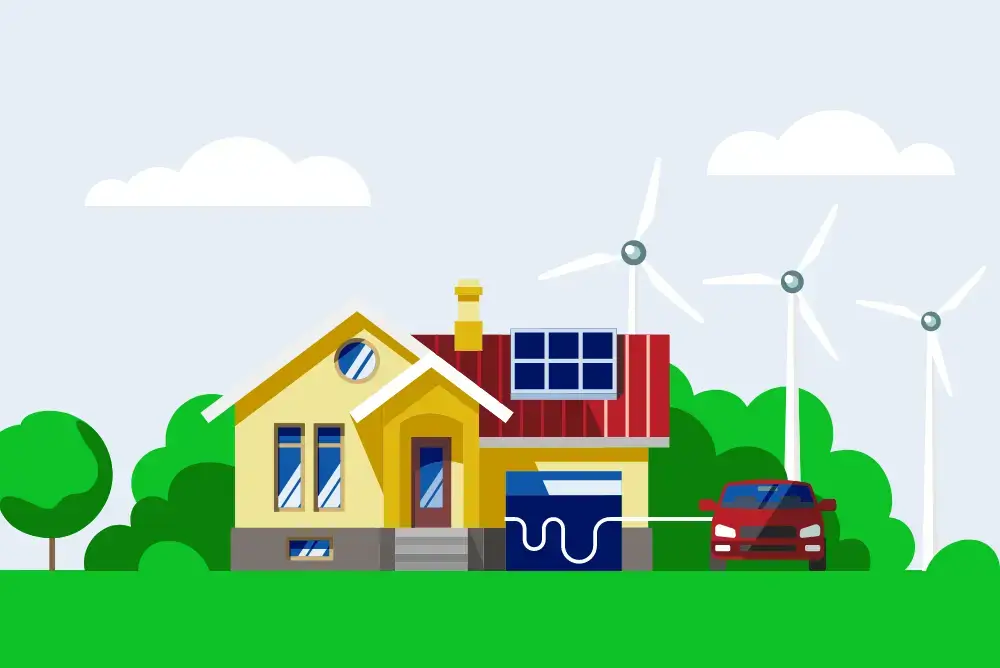
As the name suggests, it’s a source of power that is created from natural sources that are constantly replenishing themselves or won’t run out. These renewable energy sources also produce less harmful emissions or even none at all, making them an attractive alternative to hydrocarbons like oil and coal if you’re concerned about the environment.
According to the Department of the Environment and Energy, electricity accounted for just over one-third of all greenhouse gas emissions in Australia in 2024.1 As Australians become increasingly aware of the environmental impact of traditional energy sources, they are increasingly turning to renewable energy technology.
What are the benefits of renewable energy?
Renewable green energy has a range of benefits for both the planet and you as a consumer. Some of the benefits of renewable energy include:
- Supporting the environment. Direct benefits from the use of renewables include reducing greenhouse gas emissions, minimising the impact your household has on the environment and preserving the condition of Australia’s air, water and unique natural assets for generations to come.
- Budgeting. Most solar systems still need an ongoing connection to the electricity grid and can’t run during blackouts. But, you’re still self-sustainable through utilising your energy consumption while you are generating it, meaning you can reduce your overall cost of living through minimising energy bills.
- Feed-in tariffs. If you have solar panels, you may be eligible for a solar feed-in tariff if your energy system meets certain criteria set out by your electricity retailer. You may receive a credit that’s then offset against your electricity bill depending on the location of your residence and your specific retailer. However, this may change with the introduction of two-way solar charging.
- Return on investment. After your initial investment, only a few costs are involved with running or maintaining a renewable energy system, such as maintenance of your solar panels. In general, solar panels with a battery storage system typically pay for themselves in seven to nine years.2
Depending on your circumstances, solar power may only cover a portion of your energy usage. However, the long-term savings may make it a worthy investment.
What is GreenPower?
Greenpower, an Australian Government initiative, is an accreditation scheme that simplifies the process of selecting an electricity retailer that invests in renewable energy.
Through this initiative, you can choose to have your electricity retailer offset the carbon emissions caused by your energy consumption by feeding renewable energy sources back into the grid. The GreenPower products available to you may vary between electricity retailers, states and territories. Depending on your retailer GreenPower may offer this without charge, or there may be an additional fee for this feature.
Some renewable energy resources that aren’t eligible under the GreenPower program include:
- Coal seam gas
- Biomass generated from native rainforests
- Renewable energy from generators that were running before 1997
- Hydro power where largescale river diversions occurred during construction of the plant
- Non-renewable sources such as natural gas, nuclear, oil and coal-fired energy generation.3
Types of renewable energy
Solar
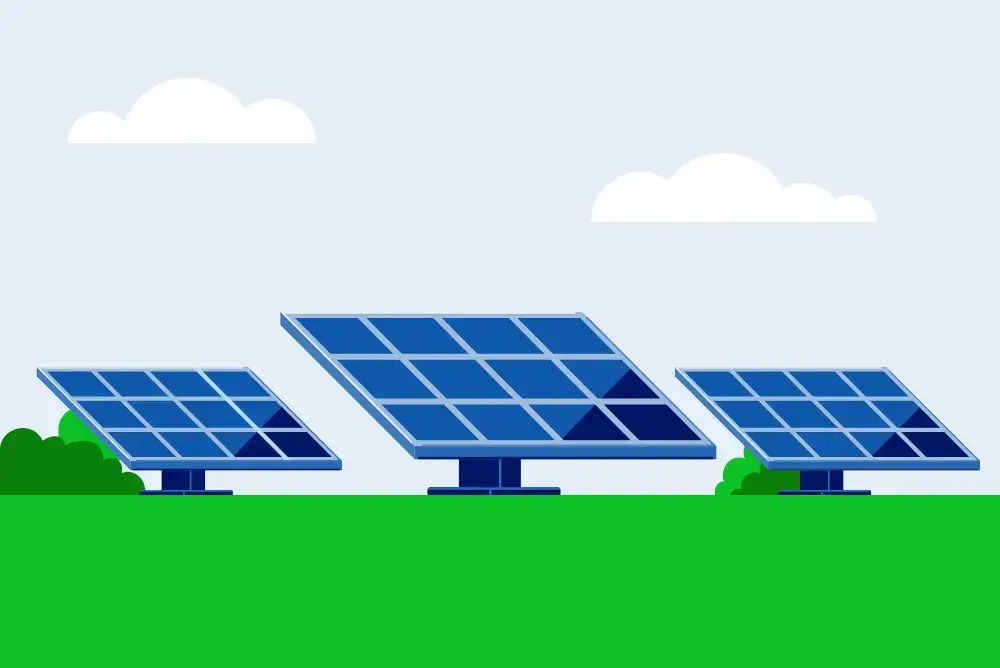 There are two main ways of harnessing green energy from the sun, and they can be used by both households and businesses alike:
There are two main ways of harnessing green energy from the sun, and they can be used by both households and businesses alike:
- Solar thermal energy. This is produced from a rise in temperature and can be used directly to heat water in solar water heaters, helping reduce energy bills. On a larger scale, thermal energy can superheat water into steam, which can be used to drive turbines to produce electricity.
- Solar photovoltaic energy. PV cells produce electrical currents through light instead of heat and are commonly used by households with solar panels.
The main drawback of solar energy is that the sun must be shining for it to work. To keep your lights on during cloudy days and at night, energy must be stored in a solar battery or sourced from alternatives like the national electricity grid.
On the plus side, you could be eligible for a solar rebate to help cover the cost of installing a solar system. You might also be able to take advantage of solar feed-in tariffs and get paid by your state or territory government for surplus energy your solar panels generate that’s sent back to the grid.
Wind
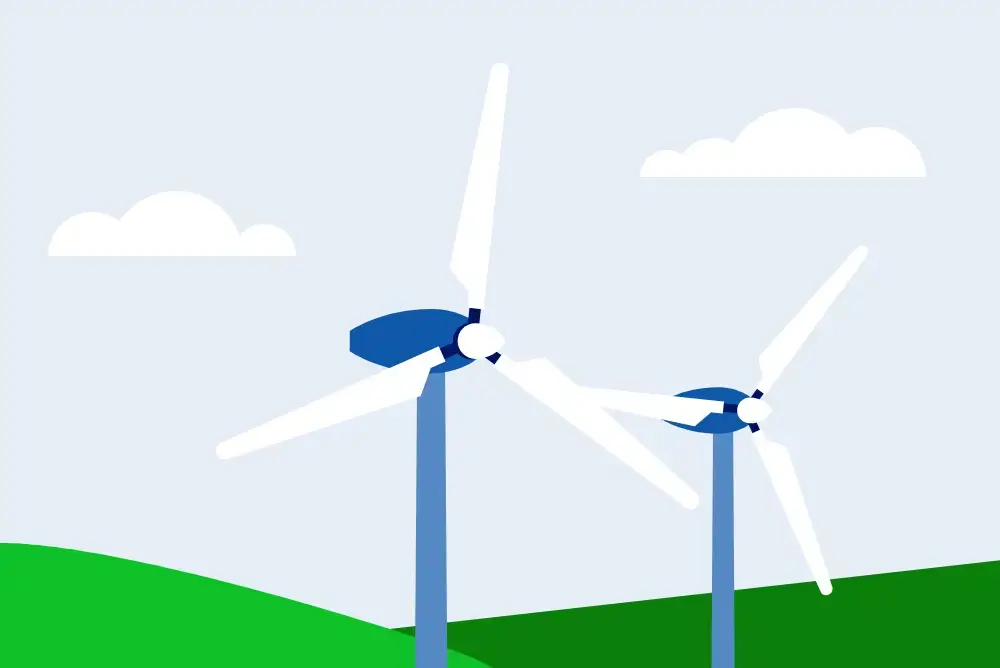 Wind energy has long been used as a means of production, but now wind turbines are mainly used to produce electricity. These turbines are found in wind farms (also known as wind power plants) placed over several kilometres of land. One advantage of wind energy is how offshore wind farms can take advantage of coastal wind and therefore not need to take up land which helps reduce deforestation.
Wind energy has long been used as a means of production, but now wind turbines are mainly used to produce electricity. These turbines are found in wind farms (also known as wind power plants) placed over several kilometres of land. One advantage of wind energy is how offshore wind farms can take advantage of coastal wind and therefore not need to take up land which helps reduce deforestation.
Most wind generators are found in clusters where reliable winds mean they’re working most of the time. As with solar energy, wind power can be somewhat sporadic in supply. As such, storage and alternative energy options are essential to make them a more efficient source of green energy.
Hydro

Water wheels, like windmills, are an old form of renewable electricity that are often used to run machinery directly. Modern hydropower uses the energy of moving water to turn turbines that produce electricity.
In Australia, hydroelectricity supplies around five to seven per cent of the country’s electricity.4 The most famous Australian hydroelectricity scheme is the Snowy Mountains complex in New South Wales (NSW).
Hydroelectricity is also widely used in Tasmania, where most of the energy supply comes from power stations (also known as power plants) harnessing hydropower. The main drawback of electricity generation using hydropower is the large volumes of water required for continuous operation.
Prolonged drought can reduce water supplies below critical levels, so in these and other circumstances, electricity generation may be stopped to preserve a supply for drinking water and other purposes.
Bioenergy
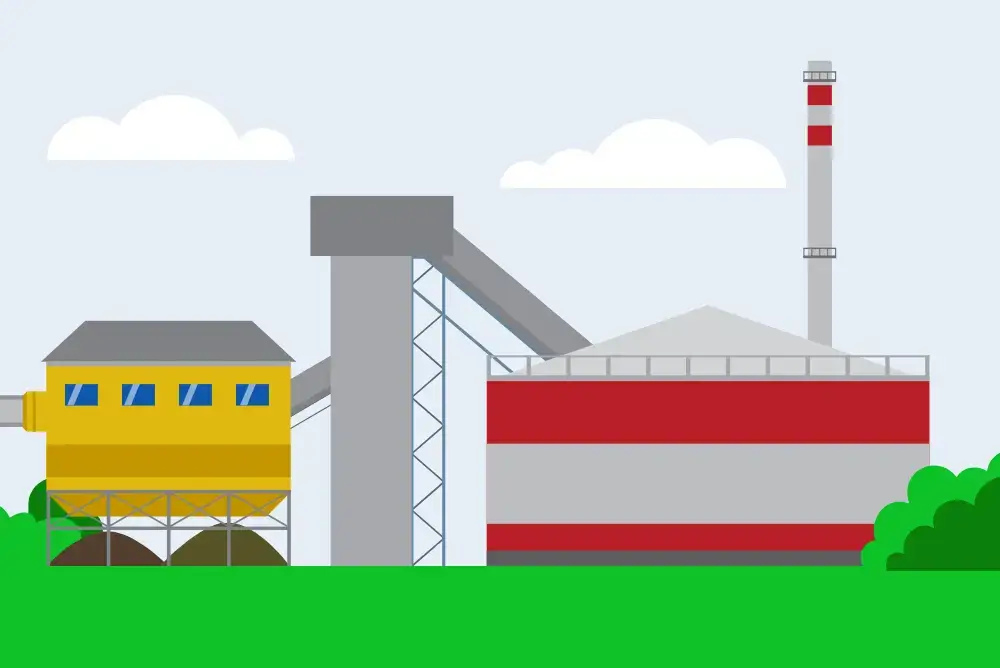
Biomass is another natural resource that comprises of different agricultural by-products that are then burned or broken down into liquid fuel (also known as biofuel). This process can include burning solid fuels (such as wood) or extracting waste products from sewerage (such as methane gas). When biofuel is burned, it creates steam that powers turbines, creating electricity.
Methane is a potent greenhouse gas and burning it as a fuel does release some greenhouse gas in the form of carbon dioxide. However, this process also reduces the overall effect of unburned methane, which also gives off carbon dioxide.
There are some useful by-products that can be made with harvested biomass, such as concrete and bitumen for roads and buildings.
In addition to creating electricity by burning bioenergy, gas can also be made from methane. Known as biogas or biomethane (depending on the mixture of the fuel), this source of power provides fuel for specific appliances like gas ovens and heaters.
While some greenhouse emissions are released, it’s an entirely renewable source of power that provides an alternative to harnessing existing natural gas pockets.
Geothermal
Unlike other renewable energy types, you have to delve beneath the earth’s surface to harness geothermal energy. This type of energy uses the heat created from magma, so areas close to active volcanos tend to be the most suitable places for generating geothermal power.
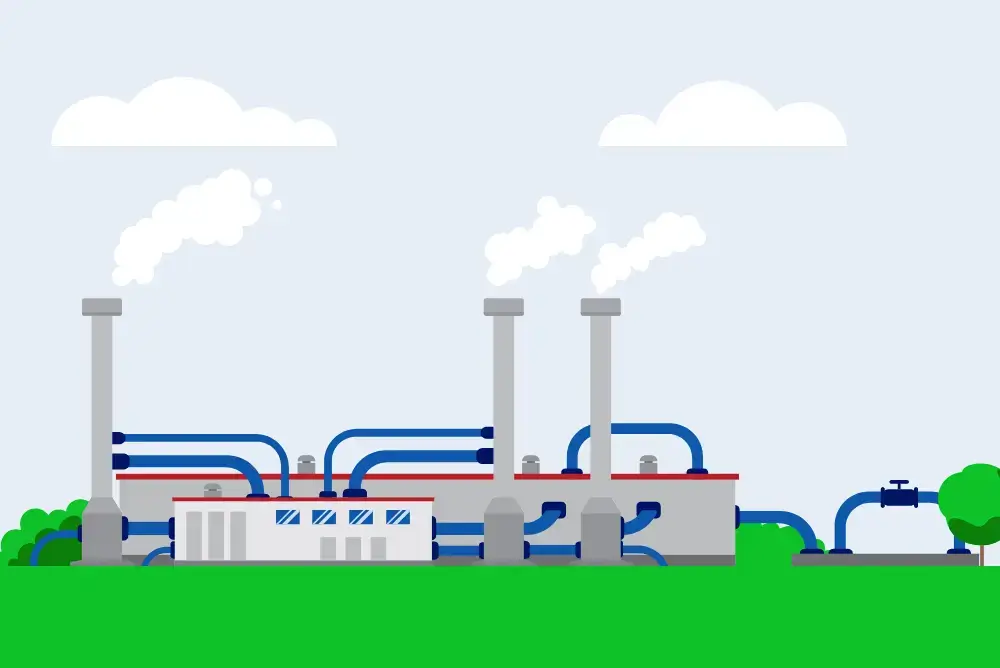
In some areas, water may be injected into the ground so it returns to the surface as steam that can be used to drive turbines and generate electricity. In other places, the water may already be present below the earth’s surface and just needs to be tapped.
While the Australian Renewable Energy Agency (ARENA) notes that Australia does have the potential to harvest geothermal energy, this renewable source of power is not currently cost-effective. This is because:
- Identifying viable sources of geothermal energy is challenging.
- Producing hot water at a high rate is difficult.
- Financing costly up-front expenses from harvesting and transmitting geothermal energy will be expensive.5
More on renewable energy
What is the Renewable Energy Target?
The Renewable Energy Target (RET) is an Australian Government scheme that plays a central role in reducing greenhouse gas emissions by helping green electricity become a more accessible part of Australia’s energy industry as opposed to fossil fuels. The Clean Energy Regulator noted that the RET is broken down into two parts:6
- Large-scale target. This provides financial incentives for the development of renewable energy infrastructure by power-generating companies, including solar plants, wind farms and hydroelectric power stations.
- Small-scale target. This encourages individuals and small businesses to adopt small-scale renewable energy systems through financial incentives. For example, if you add solar panels to your home, you could be eligible to receive a small-scale technology certificate that energy retailers and other entities are required to purchase off you.
How much of Australia's energy is renewable?
In Australia, renewable energy sources contributed as much as 39.4% of total electricity generation in 2023.7 Australia’s renewable energy production came from:
- Wind – 13.4%
- Small-scale solar – 11.2%
- Medium and large-scale solar – 7%
- Hydro – 6.5%
- Bioenergy – 1.4%
Why is renewable energy so important?
There are a number of reasons why renewable power is important:
- It helps combat global warming and climate change.
- Renewable energy sources add diversity to the nation’s energy mix, making it less reliant on just one source of energy.
- It reduces land, water and air pollution to promote a healthy natural environment.
- It helps create jobs, especially in regional Australia.8
- It can become a source of wealth through energy exports to other countries.
How can I access renewable energy?
If you’re looking to make the energy transition to renewables, in most cases you can simply get in touch with your energy retailer to switch over to green energy options. There are some retailers throughout the states and territories in Australia that offer you electricity from renewable sources.
Some retailers offer as little as 10% of your electricity to come from renewables, while others offer up to 100% of your energy needs from renewable sources. It’s worth checking with electricity retailers before committing to a change and reading the fine print before signing up.
Meet our energy expert, Meredith O’Brien
As the Head of Energy at Compare the Market, Meredith O’Brien believes in educating Australian customers about the everchanging gas and electricity market so they can adjust their energy usage habits and get the most out of their energy plans.
Meredith has six years within the energy industry, following 15 years of experience in financial services and is currently studying a Master of Business Administration. Meredith is a dedicated customer advocate who is passionate about empowering Australians to find the right products to suit their needs by removing the confusion from comparing.
Want to know more about energy?
1 Department of Industry, Science, Energy and Resources – Australian Government. Quarterly Update of Australia’s National Greenhouse Gas Inventory: June 2024. Published June 2024. Accessed January 2025.
2 Solar Victoria, Department of Environment, Water, Land and Planning, Australian Government. Section 1: Why install a solar electricity system at home? Solar Panel (PV) Buyers Guide. Last updated February 2023. Accessed January 2025.
3 GreenPower. Renewable Energy Accreditation. Accessed January 2025.
4 Australian Renewable Energy Agency – Australian Government. Hydropower/Pumped Hydro Energy Storage. Updated September 2024. Accessed January 2025.
5 Australian Renewable Energy Agency – Australian Government. Geothermal energy. Updated June 2024. Accessed January 2025.
6 Clean Energy Regulator – Australian Government. Renewable Energy Target. Updated November 2024. Accessed February 2025.
7 Clean Energy Council. Clean Energy Australia 2024. Published March 2024. Accessed January 2025.
8 Clean Energy Council. Renewable energy: powering jobs and regional communities. Accessed January 2025.

